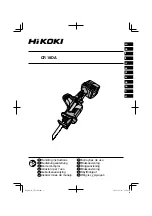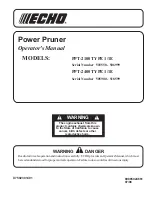
16
www.evolutionpowertools.com
Some further minor assembly is required to commission this
machine.
WARNING:
This machine is heavy. Enlist competent help when
removing this machine from its packaging.
DEPLOYING THE LEGS
The legs are stored underneath the machines main body.
• Release the retaining latch
(Fig 13)
.
• Deploy the legs.
• Ensure that the legs are secured into their service position.
• The latch must deploy and lock the legs securely in their
service position.
Note:
This machine is heavy. Competent help should be
enlisted when moving this machine. Competent help may also
be required when deploying the leg assembly and/or storing
the leg assembly underneath the machine.
THE RIVING KNIFE
The Riving Knife is a very important component, and must be
fitted correctly.
The Riving Knife has two functions:
• It prevents the work-piece from binding as it passes through
the blade.
• It provides a suitable connection point for the blade guard.
To fit and/or check the Riving Knife:
WARNING:
Ensure that this procedure is only carried out with
the machine disconnected from the mains supply.
• Remove the Table Access Plate by turning the fixing screw
¼ of a turn. Lift the Access Plate from the machine
(Fig. 14)
.
Carefully store this component for later use.
• Raise the blade to its highest position - See page 21
‘
RAISING/LOWERING THE BLADE
’ section.
• Loosen the Riving Knife fixing bolt by several turns and raise
it to its highest point
(Fig. 15)
.
• Slide the Riving Knife (it is slotted for convenience) between
the fixing plate and mounting block
(Fig. 15)
. Ensure that the
mounting blocks projecting lugs engage with the slot in the
Riving Knife.
• Adjust the Riving Knife so that it is between 3 – 5mm from
the saw blade. The blade guard mounting hole on the riving
knife should be at least 10mm higher than the tooth peak.
(Fig. 16)
.
• When correct alignment is achieved tighten the fixing bolt.
• Check the saw blade rotates freely and teeth are within
3 - 5mm of the Riving Knife.
• Re-install the Table Access Plate.
Fig. 13
Fig. 16
Fig. 14
1.
2.
Fig. 15
3 - 5mm
10 mm













































